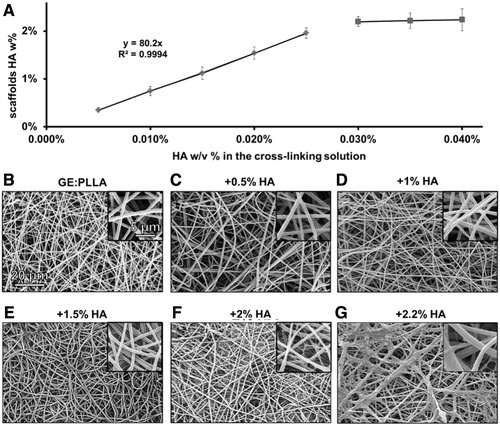Hybrid gelatin scaffolds typical of collagen-containing biological fibers

Hybrid gelatin-poly-L-lactide scaffolds were produced with an affinity for water that could be controlled. The hydrophilicity was controlled by binding increasing concentrations of hyaluronic acid to the free amine residues of gelatin, as reported in the peer-reviewed journal Tissue Engineering, Part C: Methods.
Katja Schenke-Layland, Ph.D., from Eberhard Karls University (and co-Editor-in-Chief of Tissue Engineering, Part B: Reviews), and coauthors showed that the scaffolds structurely mimicked the complexity of the extracellular matrix. When excited by second harmonic generation (SHG), they produced a signal that is typical of collagen-containing biological fibers.
"Profiting from the SHG signal and the natural endogenous autofluorescence of gelatin, we were able to marker-independently and non-invasively image the electrospun scaffolds either alone or after the seeding of human dermal fibroblasts," stated the investigators.
"Nanofibrillar electrospun scaffolds are a very important class of scaffolds to be used for tissue regeneration and drug delivery systems, as they mimic the biological extracellular matrix. This manuscript presents a crucial step in the further development of such scaffolds and makes it possible to create an even more physiological environment for the culturing of cells and the in vitro testing of drugs," says Methods Co-Editor-in-Chief John A. Jansen, DDS, Ph.D., professor, Department of Biomaterials, Radboud University Medical Center, The Netherlands.
More information: Germano Piccirillo et al, Hyaluronic Acid-Functionalized Hybrid Gelatin–Poly-L-Lactide Scaffolds with Tunable Hydrophilicity, Tissue Engineering Part C: Methods (2021). DOI: 10.1089/ten.tec.2021.0178



















